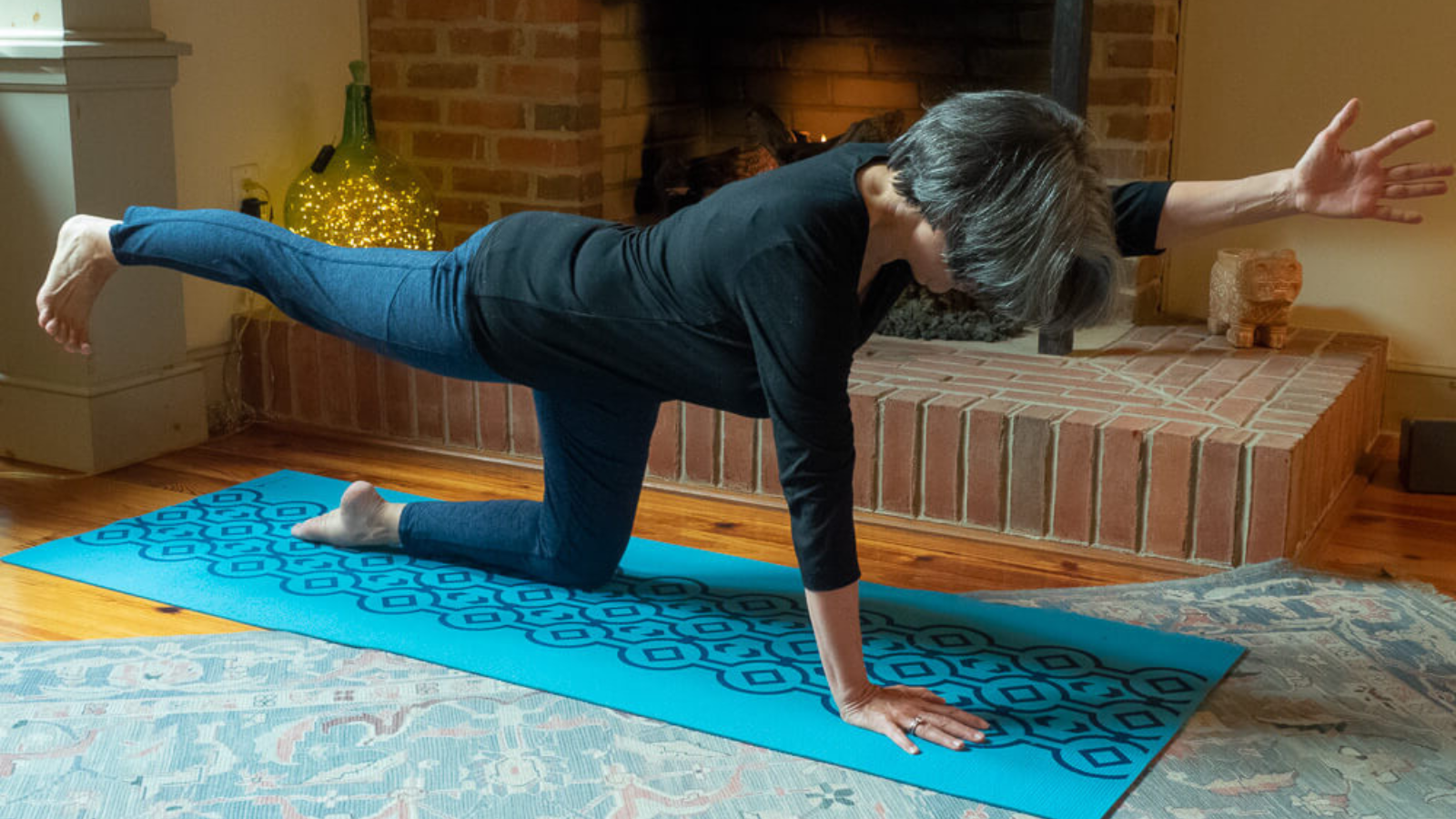View basket (0 items $0.00)

3 Ways to Counteract Text Neck with Yoga
You may already know how cell phones affect your posture, causing pain—a phenomenon called “text neck.” But did you know that cell phone usage can also change our anatomy? USA Today reported on an Australian study in which researchers examined hundreds of X-rays of adults ages 18 to 30. They observed that about half had bone growths at the back of their heads that resembled “horns.” The researchers attributed the growths to excessive rounding of the upper back that typically occurs with cell phone usage.
American adults spend an average of about three hours on their smartphones daily. Combined with laptops and other technology, we spend many hours a day looking down or slouching. According to Physiopedia, an additional 10 pounds of force are placed on the muscles that support the neck for every inch the head moves forward. This misalignment of our head and neck quickly leads to pain and postural changes for all ages.

Text Neck and Forward Head Posture
Nicknamed “text neck” or “tech neck,” excessive rounding of the thoracic spine or forward head posture are linked to many common health issues such as carpal tunnel syndrome, shoulder pain, and eye strain. The additional weight affects our spine as well as the entire body in a host of ways:
-
Pulls the entire spine out of alignment.
-
Strains the neck, spine, and shoulders muscles, tendons, and ligaments. The result is they have to work harder and can become inflamed and sore.
-
Contributes to headaches.
-
Reduces lung capacity by up to 30 percent because the ribs cannot expand properly.
-
Affects the digestive system, particularly the large intestine and bowels.
-
Reduces blood circulation and increases strain on the heart

3 Ways to Counteract Text Neck with Yoga
We aren’t going to throw our cell phones away, so what can we do? Technology is here to stay, but there are three ways to counteract its not so desired effect on our bodies with yoga:
1. Practice Axial Extension

Focus on elongating the spine in standing poses, such as Mountain Pose (Tadasana), Tree (Vrksasana), and Warrior I and II Poses (Virabhadrasana I and II) to reduce the compression of the cervical and thoracic vertebrae.
2. Practice Heart-Opening Poses

The upper chest and shoulders muscles become shortened and tight with forward head position, effectively closing off the heart center. Practicing poses like Supported Fish Pose (Matsyasana), Bridge Pose (Setu Bandhasana), and Camel (Ustrasana) strengthen and expand the upper chest. When in these poses, focus on breathing into the chest to expand the lungs as you broaden through the collarbones.
3. Strengthen Your Upper Back

Many prone poses utilize the supporting muscles of the upper back, neck, and spine, which help to maintain good posture. Be sure to include prone poses that emphasize strengthening the upper back muscles, like Locust Pose (Salabhasana), Balancing Cat Pose (Uttiha Marjariasana), and Cobra Pose (Bhujangasana).
By strengthening the upper back muscles, elongating the spine, and opening the heart, you can increase flexibility in the upper back and encourage blood circulation to counteract the effects of text neck. Then again, you could put your phone down and look up once in a while, too.
Short Practice to Help Relieve your Neck and Shoulder Stress
Reprinted with permission from WisdomTreeYoga.

Beverly Davis-Baird, MA, C-IAYT, is a New Jersey-based yoga therapist, writer, and educator. She makes yoga accessible for adults 50+, offering classes and workshops for back care, arthritis, bone health, balance, posture, and healthy aging. An educator at heart with over 20 years of experience as a public school teacher, Beverly brings her knowledge of individual learning styles to her classes, providing clear, concise, inclusive, and compassionate instruction. Bringing over 30 years of experience and training, she considers herself a lifelong learner and believes that the practice of yoga should bring spaciousness and release from tension, not create it. As such, she strives to make yoga accessible to people of differing abilities, believing the real benefits of yoga come from what is taken with you outside of class and into your life. To read her blog or learn more about her teaching schedule and latest offerings, please visit www.wisdomtreeyoga.com.
Featured Courses









